The term snail is most commonly used for land snails, though it can also be used for other snail species, such as freshwater snails and sea snails.

Like every living thing in this world, snails also have their own benefits. They can be eaten by humans and other animals, and their shells are most often used for decorative purposes.
Snails are commonly found in ditches, deserts, and the abyssal depths of the sea.
Most snails are herbivores, while some can be omnivores and predatory carnivores. Most snail types are very active at night, though some may also be active during the day.
If you want to know more about snails, then make sure to read to the end of this article. Today, we prepared a list of 23 types of snails and what they eat. Without further ado, let’s discuss them one by one.
Table of Contents
1. Giant African Land Snail (Achatina fulica)
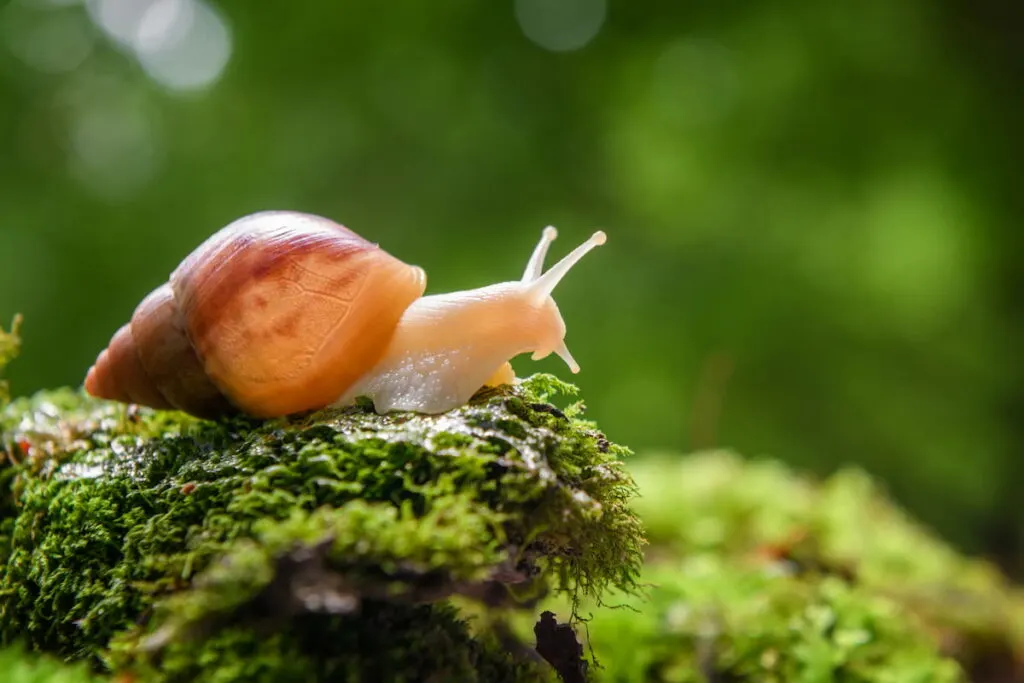
The giant African land snail is one of the largest snail species in the world, measuring about 2.75 inches in height and 7.87 inches in length.
While it is native to Africa, this snail type is now found on all continents except for Antarctica.
The giant African land snail is considered the most frequently occurring invasive snail type, as it is known to cause extreme damage to agricultural plants and crops. It has also been identified as a vector for plant pathogens.
It has a brown, tough shell that is considered to have the highest heavy metal content among all snail types. This species is an herbivore, eating various plants, fruits, vegetables, and even paper and cardboard.
In some cases, the Giant African Land Snail can also eat sand, tiny stones, bones, and eggshells as their source of calcium. Rarely, they also feed on snails, snail eggs, and other dead animals.
2. Mediterranean Green Snail (Cantareus apertus)

Also called a green garden snail, or green snail, this land snail can grow up to 4.72 inches in length.
It is native to Europe and Africa, mostly living in rainforests. In the U.S., this species is considered invasive and can negatively affect agriculture, our health, the ecosystem, and commerce.
This species is an herbivore, mostly feeding on leafy vegetables, crops, grasses, and plants.
3. Roman Snail (Helix pomatia)
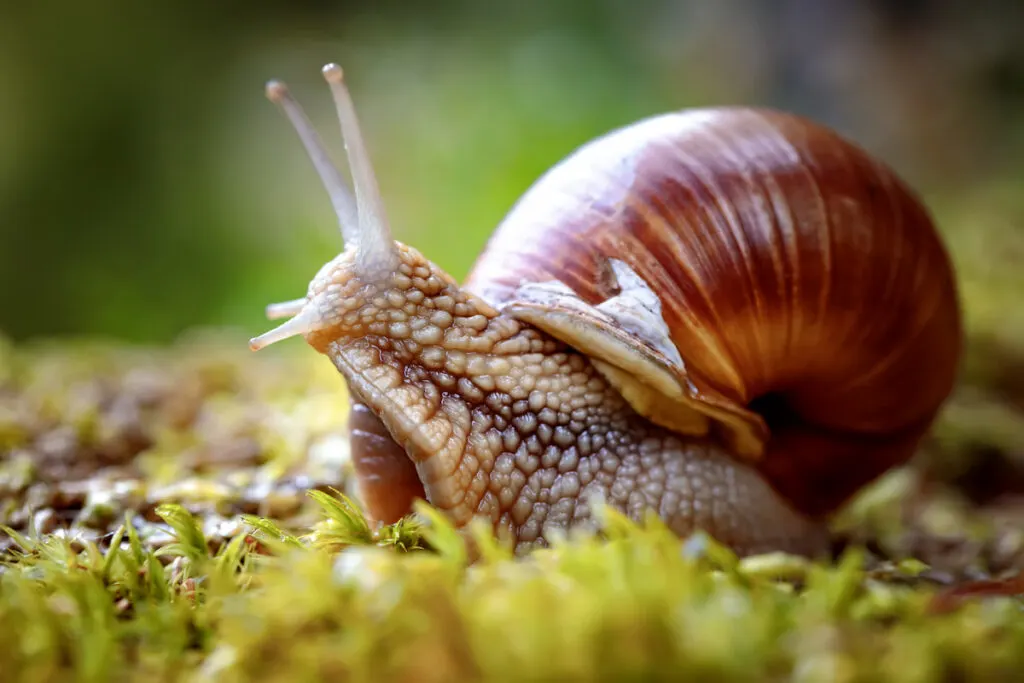
Also known as escargot, this snail type is large, edible, and is native to Europe. However, it can now be found in almost all parts of the world.
The Roman snail’s creamy white to light brown shell occupies two thirds of its weight. Part of this snail’s diet includes plants, fruit, vegetables, flowers, and other parts of plants.
4. White-lipped Snail (Cepaea hortensis)
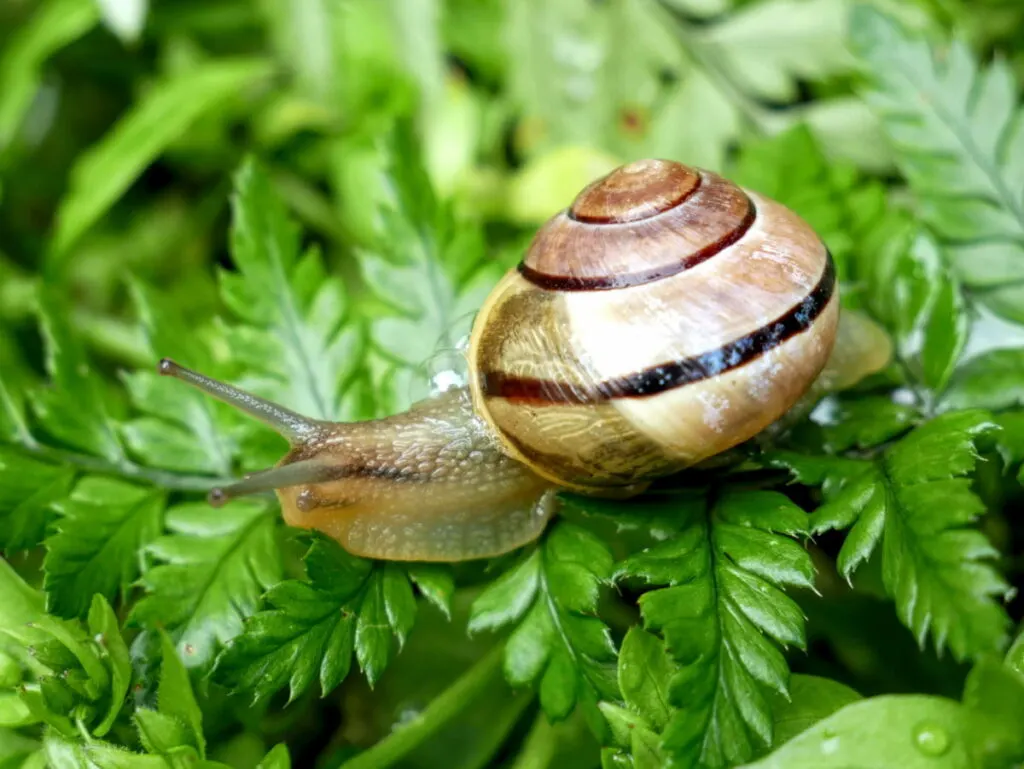
This snail species comes in various colors, but the most common is yellow. Its distinctive feature is the white band around the opening of its shell.
The white-lipped snail lives in various damp areas, including gardens, woodlands, grasslands, sand dunes, or clifftops.
This land snail feeds on ragwort, nettles, and hogweed.
5. Brown-lipped snail (Cepaea nemoralis)
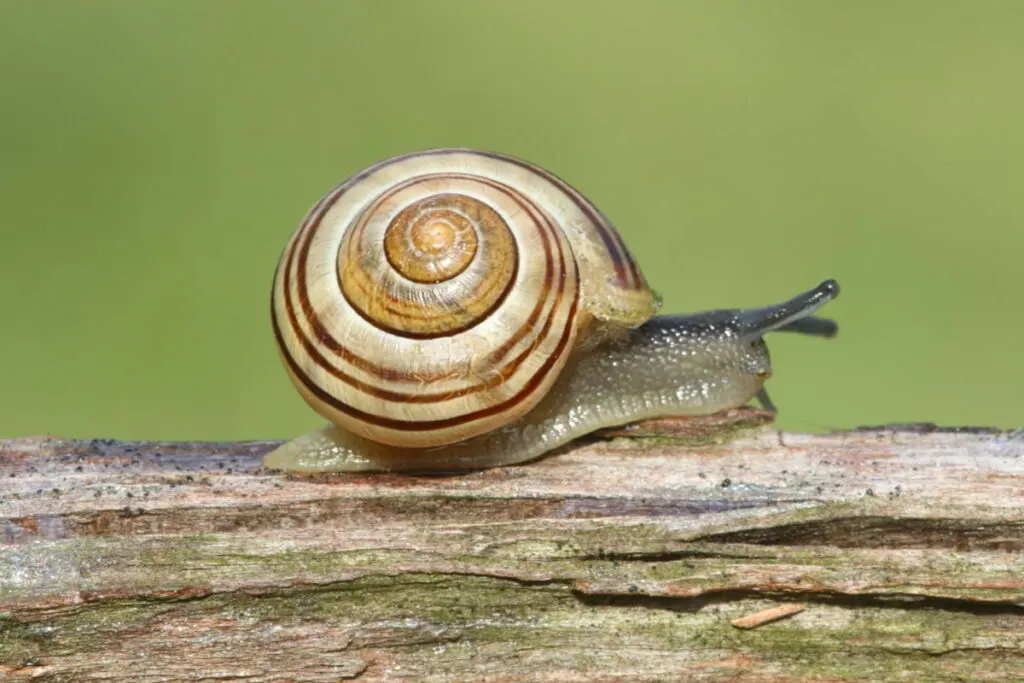
This snail type is similar to white-lipped snail. The main difference is that the brown-lipped snail has a brown band around the opening of its shell. Its shell comes in many colors, such as yellow, pink, brown, or red.
It is most commonly found in Britain, except the far north of Scotland. It feeds on plants, including nettles, and buttercups.
While it can eat fresh plants, the brown-lipped snail prefers decayed ones, making it not a problem for gardeners.
6. Garden Snail (Cornu aspersum)
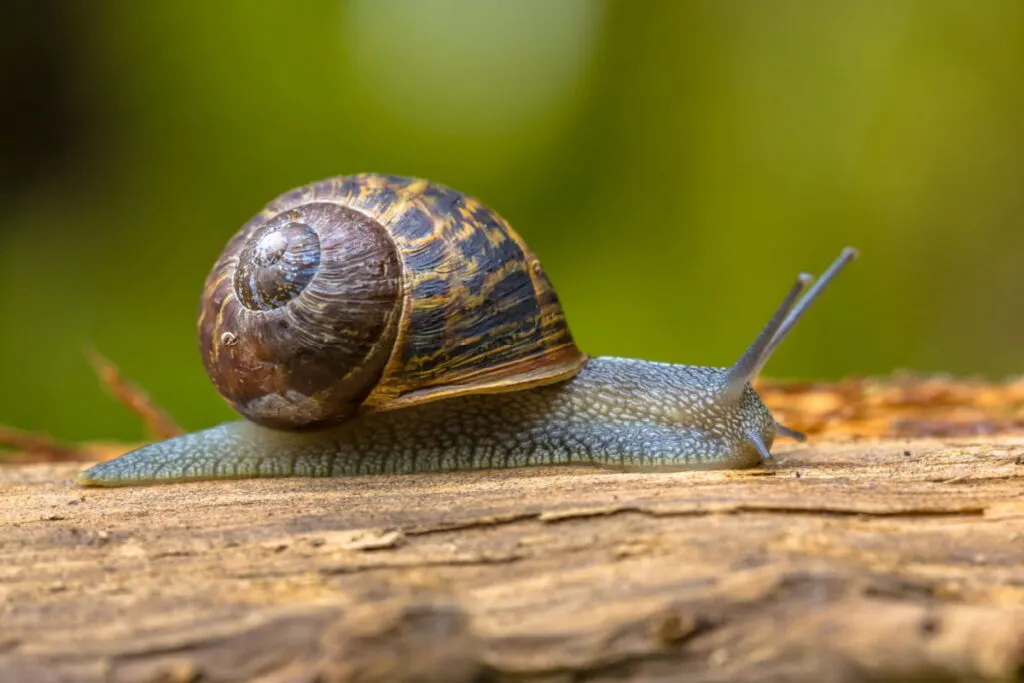
This species is one of the most popular terrestrial mollusks. It is native to Mediterranean region, but now it can be found in all parts of the world except Antarctica.
In some areas, the garden snail is prized as a food item, though it is also considered a pest in places where snails are not considered food.
Part of a garden snail’s diet includes fruit trees, crops, flowers, bark, rose bushes, and cereal grains. Sometimes they also eat decaying matter, either plants or animals.
7. Milk Snail (Otala lactea)
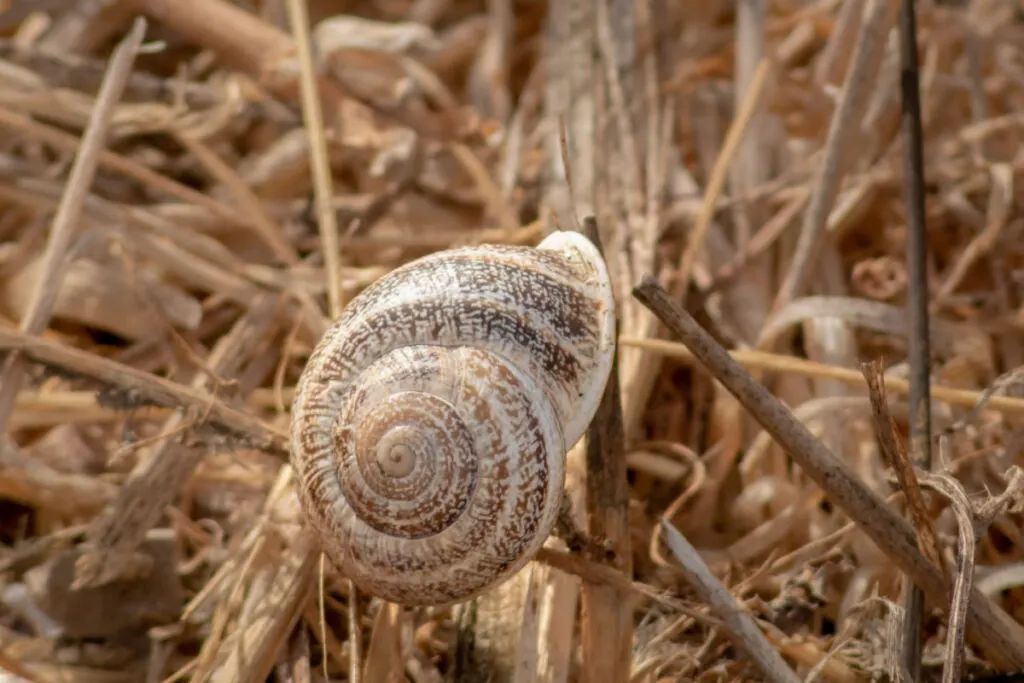
Also known as the Spanish snail, the milk snail is a large, edible species that is native to Europe and some parts of North Africa.
This type of snail mostly eats greens, such as broccoli, cabbage, cauliflower, celery, lettuce, yucca plant, as well as papaya, anise, and lily.
In some areas, like in the Mediterranean region, the milk snail is served as a food item.
8. Apple Snails (Ampullariidae)
An apple snail is a general term for large, freshwater snails that can grow up to 5.9 inches when properly cared for.
Because of its appearance, this species is mostly used as an aquarium pet. Some of its colors include gold, blue, tiger-striped, and white.
Apple snails feed on vegetables, fish food pellets, brine shrimp, frozen foods, and dead fish or insects.
In Asia, this snail type is considered a pest because of its ability to climb out of the water and feed on a gardener’s crops.
9. Golden Apple Snail (Pomacea canaliculata)

Also called the channeled apple snail, this species is a freshwater type and is native to South America.
However, it has spread throughout the world. In fact, it is considered a major agricultural pest in Southeast Asia.
Golden apple snails feed on young emerging rice plants, as well as taro. Meanwhile, younger snails eat algae and detritus.
10. Mystery Snails (Pomacea bridgesii)
Perhaps one of the most popular freshwater snails for aquarium enthusiasts, mystery snails are an excellent addition to any aquarium because of their colorful shells and ability to clean up waste and excess food.
They do not eat healthy plants, and are safe to keep with any fish, shrimp, or plants.
Aside from algae, mystery snails also feed on fish pellets, biofilm, and blanched greens such as cucumber, kale, spinach, and zucchini.
11. Colombian Ramshorn Apple Snail (Marisa cornuarietis)
Also called the paradise snail, this species is a large, freshwater snail that is popularly used as a biological control agent in aquariums, as well as in the wild.
The Colombian ramshorn apple snail is native to South and Central America.
It is omnivorous, and feeds on algae, plants, snails, and dead fish.
12. Common Whelk (Buccinum undatum)

The common whelk is a large, edible marine snail with a shell that is white, red, or yellow in color.
Because this species eats live bivalves, it greatly benefits from starfish feeding since it feeds on the bivalve remains abandoned by the starfish.
In turn, the common whelk is prey to several fish and crustaceans. In some parts of the world, they are also considered as a menu item.
13. Common Periwinkle Snail (Littorina littorea)
This is a small, edible snail that is native to the rocky shores of the northeastern Atlantic Ocean. In history, this snail is considered an essential source of food in Scotland.
Today, it is now considered as a delicacy in African and Asian cuisines. Not only that, periwinkle snails are also used as bait when catching fish.
The common periwinkle snail is omnivorous, and would mostly graze algae, though it may also eat small invertebrates, such as barnacle larvae.
14. Nerite Snails (Neritina natalensis)
This species can live in freshwater tanks, and is considered an excellent algae eater. In addition, nerite snails also consume excess fish food, dead plants, and other matter that’s left at the bottom of the aquarium.
They don’t eat healthy plants, and they are suited for shrimp tanks since their wastes include bacteria that’s useful to the digestive tracts of shrimp.
15. Assassin Snails (Clea helena)
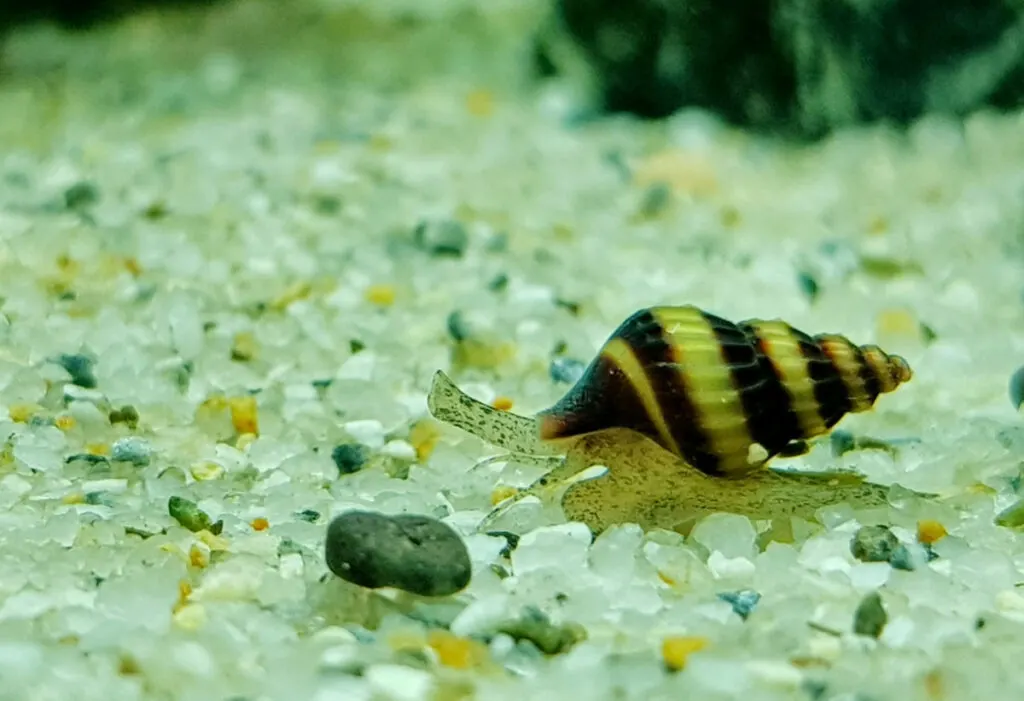
Assassin snails are useful animals, eliminating pest snails in your aquarium by eating them.
They are good at controlling the snail population in the area where they are kept. A native to southeast Asia, assassin snails are carnivores that feed mostly on other snails.
However, it is said that they can eat dwarf shrimp if they get the opportunity, so be careful when housing them with dwarf shrimp.
Overall, you don’t need to worry when keeping them with fish and live plants since they are mostly interested in eating other snails.
However, they won’t eat snails of their own species, even if there’s scarcity in their food supplies.
16. Rabbit Snails (Tylomelania)
The rabbit snail is a unique freshwater snail that’s becoming a favorite among aquarium hobbyists due to its big size, unique color, and its rabbit-like face.
Unlike most snails that have soft and gelatinous skin, rabbit snails have rough and wrinkled skin, hence their nickname elephant snails.
This species is native to Sulawesi, Indonesia, and it mostly feeds on soft algae, dead plants, detritus, and other matters at the bottom. Basically, they help in cleaning your water tank.
17. Pond Snails (Lymnaea stagnalis)
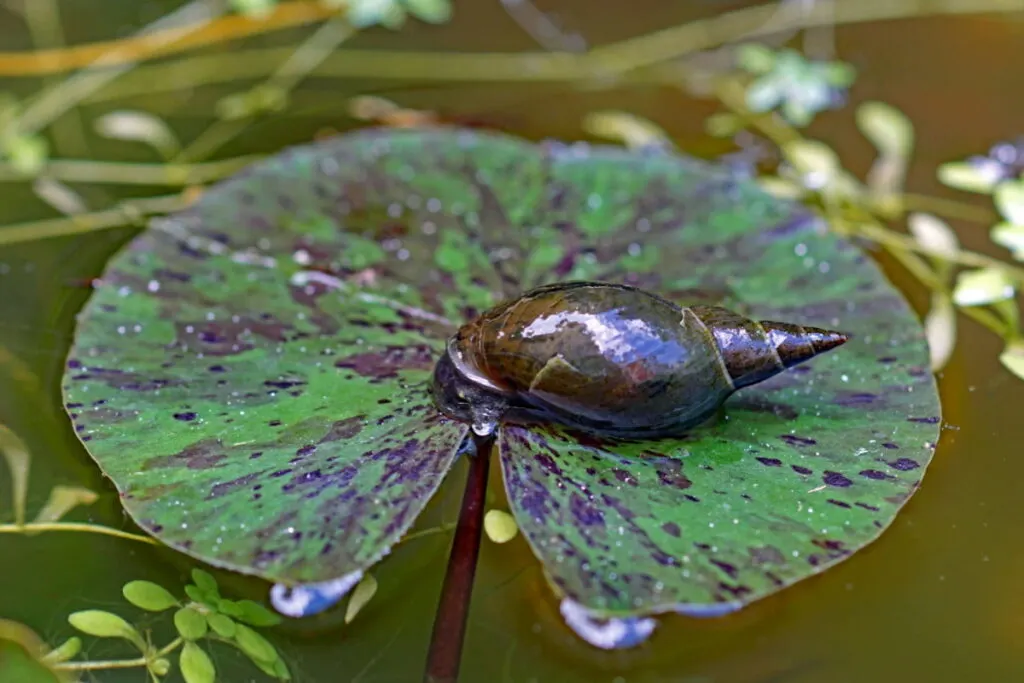
Some people consider pond snails as valuable, while for some, they are considered as pests.
Pond snails are omnivores, and mostly feed on algae, dead plants, detritus, and excess fish foods.
They are safe to keep with healthy plants, though they reproduce quickly when there’s so much food for them to eat.
Water should be changed regularly to limit their supply of food, thus reducing excessive production of pond snails.
18. Malaysian Trumpet Snails (Melanoides tuberculata)
Like the Pond snails, Malaysian trumpet snails are either considered pets or pests. They feed on leftover fish food and other edible matter at the bottom of the tank.
However, keep in mind that the more food there is, the quicker they will reproduce. To control their population, hobbyists tend to limit their supply of food.
19. Candy Cane Snails (Liguus virgineus)
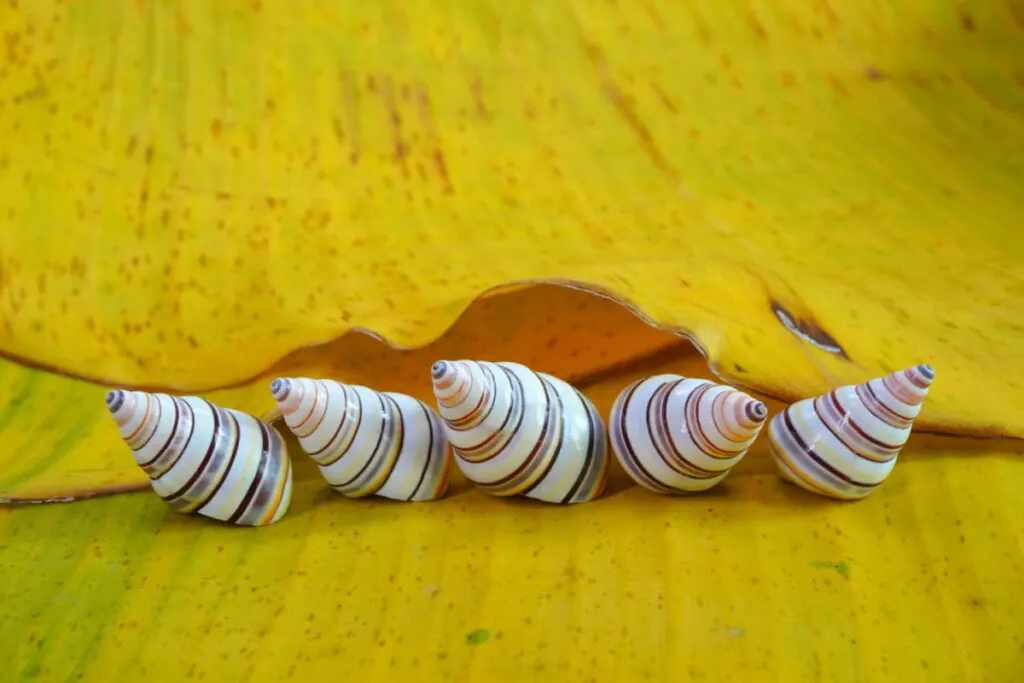
Perhaps the most colorful snail out there, the candy cane snail displays a white, conical shell with a rainbow-colored stripe. It lives on trees, and can be found in the Caribbean.
Younger candy cane snails feed on leaf-growing lichen, twigs, and small branches, while adults feed on bark-growing lichens.
20. Violet Sea Snails (Janthina janthina)
Also known as the bubble-raft snail, this species sports an interesting violet shell.
It cannot swim, and can only travel long distances by floating. Using air bubbles as a raft, this species is found in the warm water of temperate and tropical seas.
Violet sea snails mostly feed on pelagic hydrozoans.
21. Sea Butterflies (Thecosomata)
The sea butterfly is a small, pelagic, swimming sea snail. Unlike most snails, this species does not crawl.
Instead, they freely swim and float in the water through the help of their wing-like lobes.
Sea butterflies feed on small crustaceans, and they are considered prey to various fishes, sea birds, and whales.
22. Geography Cones (Conus geographus)
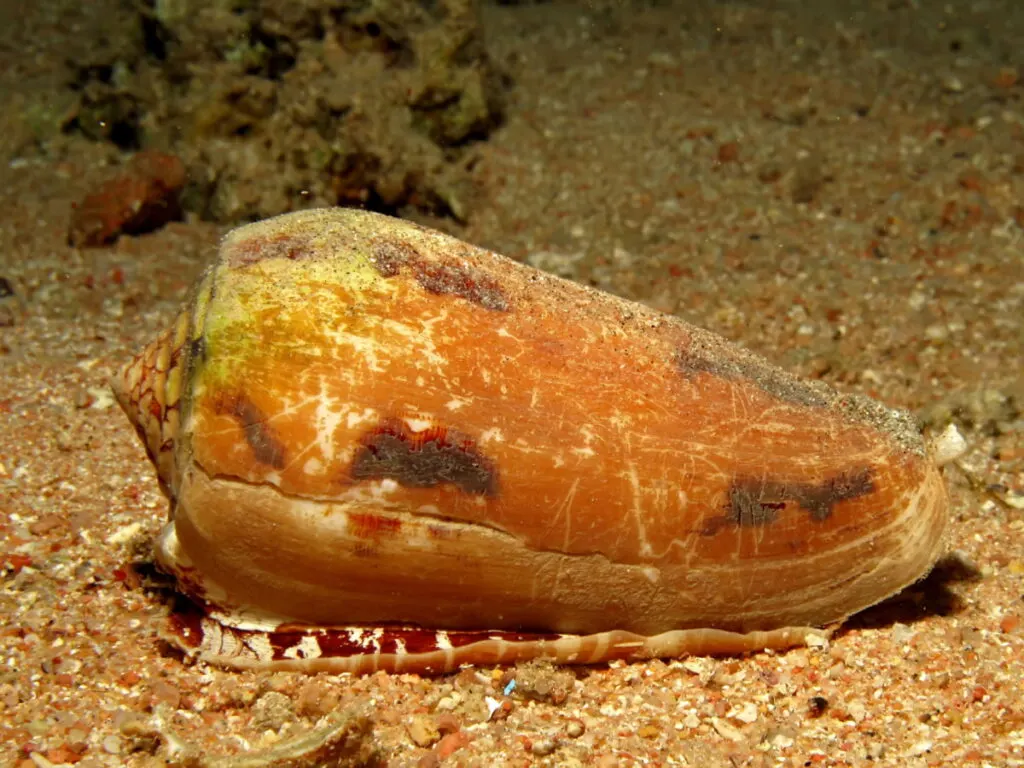
Commonly found on the reefs of Indo-pacific, this species has a distinctive-patterned brown and white shell that is highly treasured by shell collectors.
Careful, though.
Geography cones are the most venomous snail out there. As a matter of fact, it’s one of the most venomous creatures in the world, and they are capable of causing human death.
Cone snails mostly feed on marine worms and other mollusks, though there are reports that they can also hunt fish with the help of their venom.
23. Croatian Cave Snails (Zospeum tholussum)
The Croatian cave snail is a tiny species that lives in caves. It was first found in the deepest cave in Croatia – the Lukina Jama-Trojama cave system.
Because it lives deep down in the cave with no light, this snail type is blind and moves very slowly.
It is known for being almost transparent—and that includes its shell— giving it a ghost-like appearance.
And that ends our long list of different snail types and their diet. I hope that your knowledge about snails improved after reading this article.
If you find this article helpful, make sure to share it with your family and friends.

References:
- https://naturetingz.com/types-of-snails/#Limpets
- https://www.aqueon.com/articles/types-of-aquarium-snails
- https://www.treehugger.com/most-interesting-snails-in-the-world-4869307
- https://nayturr.com/types-of-snails/
- https://en.wikipedia.org/wiki/Snail
- https://en.wikipedia.org/wiki/Achatina_fulica
- https://en.wikipedia.org/wiki/Cantareus_apertus
- https://en.wikipedia.org/wiki/Helix_pomatia
- https://www.snail-world.com/roman-snail-escargot/
- https://www.wildlifetrusts.org/wildlife-explorer/invertebrates/slugs-snails-and-freshwater-mussels/white-lipped-snail
- https://www.woodlandtrust.org.uk/trees-woods-and-wildlife/animals/slugs-and-snails/white-lipped-snail/
- https://www.buglife.org.uk/bugs/bug-directory/brown-lipped-snail/
- https://www.wildlifetrusts.org/wildlife-explorer/invertebrates/slugs-snails-and-freshwater-mussels/brown-lipped-snail
- https://www.snail-world.com/garden-snail/
- https://en.wikipedia.org/wiki/Otala_lactea
- https://en.wikipedia.org/wiki/Ampullariidae
- https://en.wikipedia.org/wiki/Pomacea_canaliculata
- http://www.knowledgebank.irri.org/step-by-step-production/growth/pests-and-diseases/golden-apple-snails
- https://aquaticarts.com/pages/mystery-snail-care-guide
- https://en.wikipedia.org/wiki/Marisa_cornuarietis
- https://en.wikipedia.org/wiki/Buccinum_undatum
- https://en.wikipedia.org/wiki/Common_periwinkle
- https://www.fishkeepingworld.com/nerite-snails/
- https://aquaticarts.com/products/assassin-snails
- https://www.aquariumsource.com/rabbit-snail/
- https://www.aquariumcarebasics.com/freshwater-snails/malaysian-trumpet-snails/
- https://en.wikipedia.org/wiki/Liguus_virgineus
- https://en.wikipedia.org/wiki/Janthina_janthina
- https://en.wikipedia.org/wiki/Sea_butterfly
- https://penelope.uchicago.edu/~grout/encyclopaedia_romana/aconite/geographus
- https://www.nationalgeographic.com/animals/invertebrates/g/geography-cone/
- https://en.wikipedia.org/wiki/Zospeum_tholussum

HRH PRINCE ABDUL MUHSIN
Saturday 27th of November 2021
Paradise snail and African snail
Chinedu blessing
Saturday 28th of August 2021
I thought that achantina achantina (AA) Is the giant of Africa snail